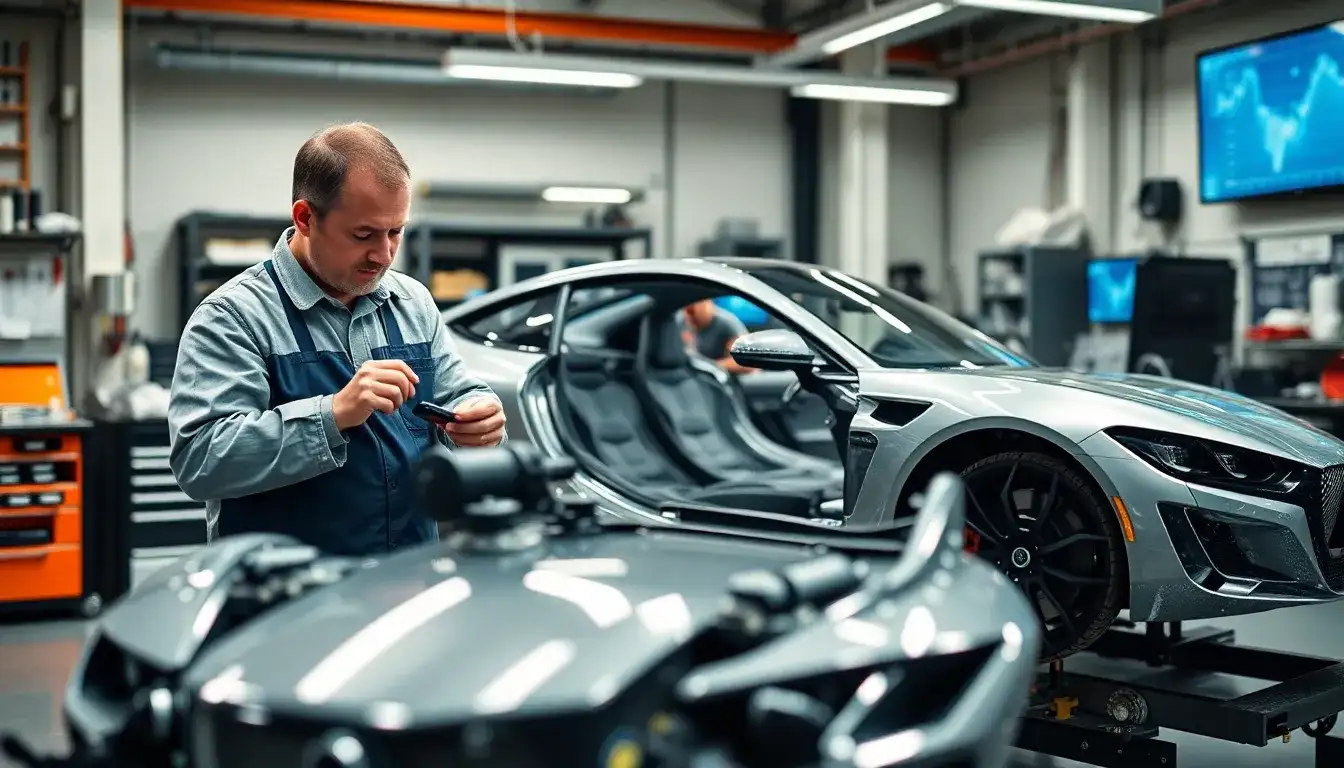
Automotive Lightweighting: Technological Innovations Driving Industry Upgrades and Investment Opportunities
In the automotive industry’s pursuit of high efficiency and low energy consumption, automotive lightweighting has emerged as a key trend. This trend is significant not only for technological innovations in automotive engineering but also for creating new development opportunities in the market. It has become a hot topic across various platforms, including Bai Jiahao, Dongche Di, and Oriental Fortune.
Methods of Achieving Automotive Lightweighting
Automotive lightweighting primarily involves the use of new materials and optimized structural designs. In terms of materials, high-strength steel, aluminum alloys, magnesium alloys, and carbon fiber composite materials are widely utilized. High-strength steel, known for its high strength, excellent formability, and relatively low cost, is extensively used in critical components of vehicle body structures, such as the A-pillars and B-pillars. By using high-strength steel, manufacturers can reduce weight while ensuring safety.
Aluminum alloys, characterized by low density and high specific strength, are increasingly used in automotive manufacturing. Components like engine blocks, wheels, and body panels can be made from aluminum, effectively lowering the overall vehicle weight. Magnesium alloys, which have an even lower density, are applied in weight-sensitive parts such as steering wheel frames, further reducing weight. Carbon fiber composite materials, while more expensive, provide exceptional strength and low density. They are primarily used in high-end models and racing cars to significantly lower vehicle weight while enhancing performance.
In terms of structural design optimization, topology optimization plays a crucial role. Engineers can use computer simulations to analyze and optimize vehicle structures, removing unnecessary materials while meeting performance requirements. This leads to more rational and compact designs, achieving the lightweighting goal. For instance, some manufacturers have developed new chassis structures using topology optimization that not only reduce weight but also enhance vehicle rigidity and safety.
Enhancements in Vehicle Performance Due to Lightweighting
The impact of automotive lightweighting on vehicle performance is multifaceted. First, in terms of power performance, reducing vehicle weight allows the engine’s output to be more efficiently converted into kinetic energy, significantly improving acceleration. For example, a previously heavy SUV model could see its 0-100 km/h acceleration time shortened by 1 to 2 seconds with lightweighting technologies, leading to a more enjoyable driving experience.
Second, regarding fuel economy, every 10% reduction in vehicle weight can decrease fuel consumption by 6% to 8%. A lighter vehicle requires less energy to overcome inertia during driving, thereby reducing engine load and fuel consumption. This is equally important for new energy vehicles, as lightweighting can effectively increase range and enhance battery efficiency. Additionally, lightweighting improves vehicle handling; a lighter body responds more quickly and has less inertia during turns, allowing drivers to control the vehicle’s trajectory more accurately, thus enhancing driving enjoyment and safety.
Current Market Development of Automotive Lightweighting
Globally, the automotive market is increasingly recognizing the importance of lightweighting. Major manufacturers are ramping up their investments in the research and application of lightweight technologies. In China, with stricter environmental regulations and rising consumer demands for vehicle performance, the lightweighting market is developing rapidly. More domestic brands are adopting lightweight technologies, transitioning from partial component lightweighting to full vehicle lightweighting. For instance, Geely has implemented aluminum engines and high-strength steel body structures in several models, effectively reducing vehicle weight and enhancing product competitiveness.
In the international market, luxury and high-performance manufacturers see lightweighting as a crucial means to enhance product performance. For example, BMW’s i-series electric vehicles extensively utilize carbon fiber composite materials in their body structures, achieving extreme lightweighting while improving range and handling performance.
Investment Opportunities in the Automotive Lightweighting Industry Chain
From an investment perspective, the automotive lightweighting industry chain presents numerous opportunities. Upstream new material suppliers are positioned for growth, such as steel companies producing high-strength steel. As demand for high-strength steel in the automotive sector increases, product sales are expected to improve, enhancing performance. Aluminum and magnesium alloy producers will also benefit, as they need to continuously upgrade production processes to meet strict industry requirements for material quality and performance. While carbon fiber composite material companies face challenges due to high costs, advancements in technology and growing market demand suggest significant future potential. For example, Zhongfu Shenying, focused on carbon fiber research and production, is likely to expand its market share in the automotive sector as lightweighting demands grow.
Midstream automotive parts manufacturers can expand their business by developing and producing lightweight components such as aluminum wheels and carbon fiber body parts, increasing product value. Companies with advanced lightweight component manufacturing technologies hold a competitive advantage, attracting significant investor interest.
Downstream vehicle manufacturers that actively promote the application of lightweight technologies are likely to improve product performance and market competitiveness, potentially enhancing their valuations in the capital market. For instance, Tesla has boosted vehicle performance through continuous optimization of body structures and the use of lightweight materials, placing its market value among the highest in the global automotive industry.
As a pivotal direction of technological innovation in the automotive sector, automotive lightweighting not only enhances vehicle performance and drives market development but also presents abundant investment opportunities. Sharing knowledge on platforms such as Bai Jiahao, Dongche Di, and Oriental Fortune can help automotive enthusiasts, owners, and investors better understand the lightweighting field and grasp industry development trends.







